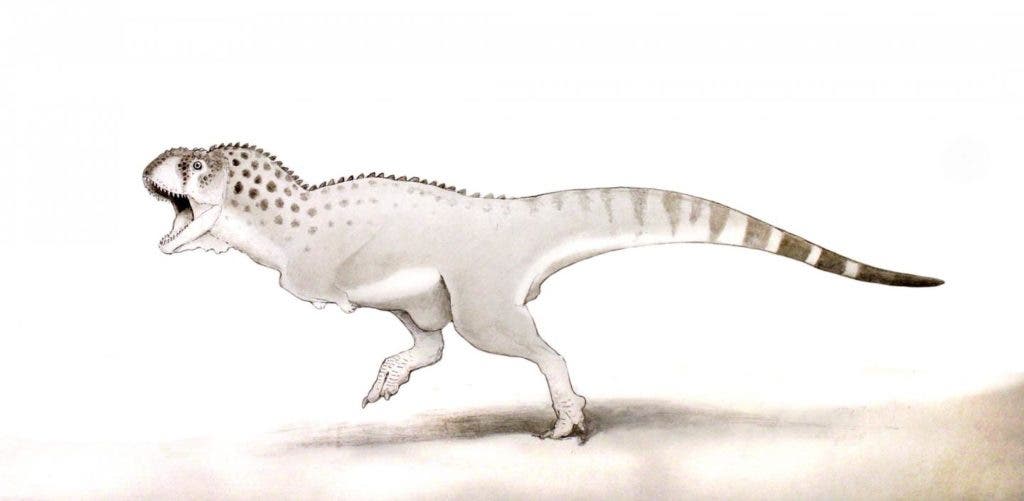A recent study sheds new light on one of the last living African dinosaurs, from 66 million years ago. The fossils were found in a Moroccan mine and analyzed by researchers from the University of Bath in the UK.

Some 66 million years ago, most life on Earth had a very bad time. With the exception of some species like the leatherback sea turtle and crocodiles, no four-legged vertebrates weighing more than 25 kilograms survived. We know quite a lot about this event and some of the species affected by it, but not much at all is known about the African dinosaurs, which have remained notoriously understudied.
“We have virtually no dinosaur fossils from this time period in Morocco – it may even be the first dinosaur named from the end-Cretaceous in Africa. It’s also one of the last dinosaurs in Africa before the mass extinction that wiped out the dinosaurs,” said lead author Dr Nick Longrich, from the Milner Centre for Evolution and the Department of Biology & Biochemistry at the University of Bath.
Last year, Longrich came across an intriguing fossil — a rare fragment of a jaw bone, deep in the mines at Sidi Chennane in the Oulad Abdoun Basin, Morocco. Working within an international team, he was able to identify the fragment as belonging to an abelisaur.
Abelisaurs flourished in the Southern hemisphere during the Cretaceous period, but their origins can be traced back much further, during the Jurassic, some 170 million years ago. In Asia and North America, abelisaurs became extinct during the Cretaceous but continued to thrive in the Southern Hemisphere. Still, fossils to document their existence are scarce.
The geology and climate of the time also explain why fossils are so special: sea levels were high, and so most of the fossils come from marine rocks. This means that in pretty close structures and layers you could find terrestrial creatures alongside marine ones.
“This find was unusual because it’s a dinosaur from marine rocks — it’s a bit like hunting for fossil whales, and finding a fossil lion. It’s an incredibly rare find — almost like winning the lottery. But the phosphate mines are so rich, it’s like buying a million lottery tickets, so we actually have a chance to find rare dinosaurs like this one.”
The phosphate mines Longrich mentions are the remains of an ancient seabed, laid down 66 million years ago. They’re also a significant part of Morocco’s economy, being used in everything from agricultural fertilizer to sugary drinks.
So this fossil helps us improve our understanding of abelisaurs. Named Chenanisaurus barbaricus, the newly discovered dinosaur stood on two legs and had stumpy arms — looking a bit like the much more famous T-Rex, which likely outcompeted it in some parts of the world. They had very short arms and also very tiny hands. Seriously, if you think tyrannosaurs had small hands, have a look at this guy; the hands were likely completely useless for hunting. The teeth seemed to be made for biting into bones, so there’s a good chance it was a top predator. However, unlike T-Rex (of which many paleontologists now believe was partially feathered), Chenanisaurus was completely covered in scales.
More fossils likely lurk in the Moroccan mines, just awaiting discovery. As for this, it’s an intriguing find which shows that although Chenanisaurus and other dinosaurs shared a similar place in the food chain and had significant similarities, they were also very different.
“It’s an exciting find because it shows just how different the fauna was in the Southern hemisphere at this time,” Longrich concludes.
The study was published in the journal Cretaceous Research: Nicholas Longrich (University of Bath, UK), Xabier Pereda-Suberbiola (Universidad del País Vasco/EHU, Bilbao Spain), Nour-Eddine Jalil (UCA, Morocco – Muséum national d’Histoire naturelle, France), Fatima Khaldoune & Essaid Jourani (OCP S. A, Morocco) (2017) “An abelisaurid from the latest Cretaceous (late Maastrichtian) of Morocco, North Africa” http://doi.


